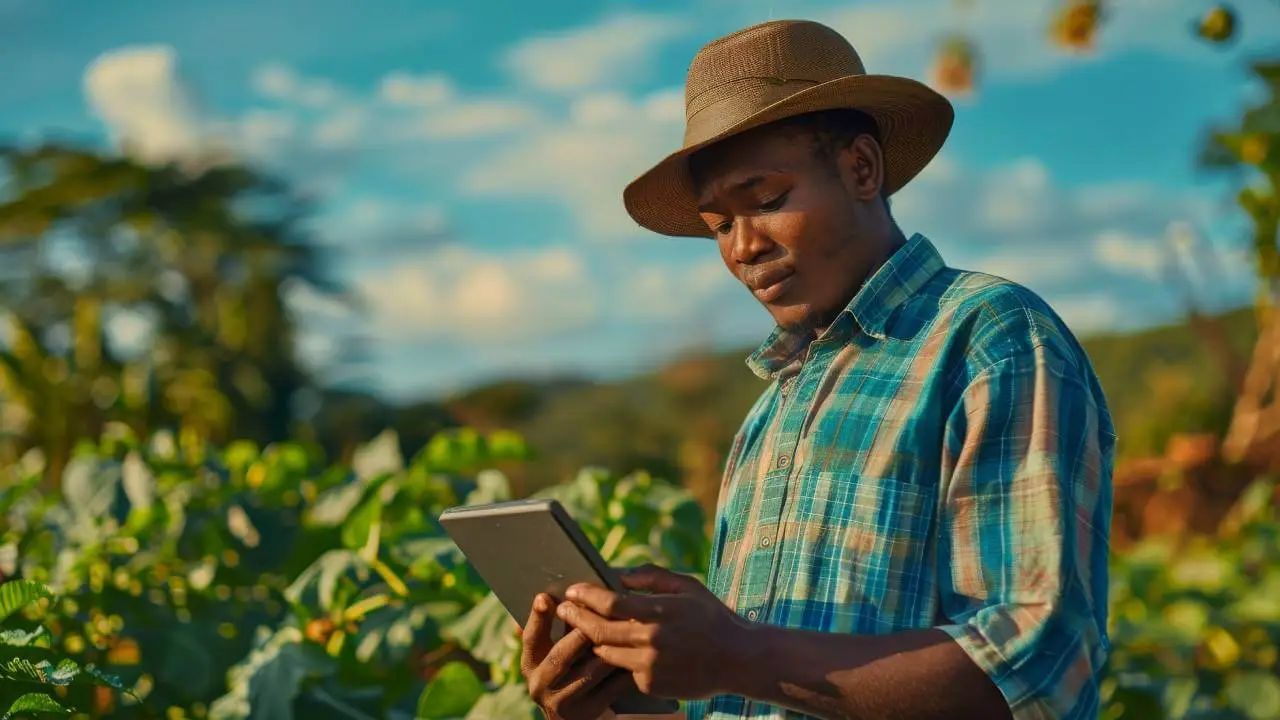By Daniel Itai | Connecting Africa
In recent years Zimbabwe has been implementing more agritech solutions and climate-smart technologies to counter challenges impacting the agricultural sector.
In November 2021, Zimbabwe launched the National AgriTech Strategy 2021-2025 aimed at digitalizing the farming ecosystem and improving evidence-based decision making for African farmers.
According to Farmonaut, a satellite-based crop health monitoring startup, solar-powered irrigation systems have boosted crop yields by 30% in Zimbabwe.
Within the last decade, the Southern African country has experienced four drought seasons resulting in erratic crop outputs and the death of livestock, making the adoption of smart agriculture solutions a necessity.
Viability of implementing smart agriculture
Although the government has made calls for the adoption of smart agriculture, access to it and the know-how is still limited to a few farmers who are mainly into commercial farming due to the high cost of acquiring equipment such as drones, solar panels and lithium batteries.
Over the past two decades, the country has been battered with constant power cuts, which have inadvertently led to irregular water supplies affecting communal and commercial farmers.
In 2020 the government also launched the Intwasa/Pfumvudza program, a climate-smart agriculture model designed to help smallholder farmers improve crop productivity under adverse weather conditions. As a result, the Ministry of Lands, Agriculture, Fisheries, Water and Rural Development has been training farmers to use and implement drone technology in farming, which enables precision agriculture, feed surveillance, field mapping and chemigation.
In 2023, the government gave the green light to the use of climate-smart seeds such as maize, sorghum, millets, rice, soyabeans, sunflowers and cotton, which adapt to changing climatic conditions.
Speaking to Connecting Africa, Blessing Phiri, co-founder of agritech company Agriacres, said Zimbabwe has been shifting to renewable energy, solar boreholes, off-grid storage and precision farming.
“To date, several farmers are now using mobile apps, USSD platforms, drones and satellite imaging whilst others have started implementing the central node system or IoT [Internet of Things] sensors and already some have started to yield results especially those engaging in outsourcing precision services,” Phiri said.
In addition, Olga Nhari founder and national coordinator of Women in Agriculture Union (WAU), said the adoption of smart agriculture in Zimbabwe was a significant milestone, especially for female farmers.
“Women farmers are increasingly using mobile apps, precision farming tools, and climate-smart agriculture technologies to enhance their productivity and decision-making. These tools help them monitor crop health, optimize water usage, and predict weather patterns, ultimately improving their yields and livelihoods,” Nhari said.
Nhari further highlighted that agritech was playing a pivotal role in helping women farmers adapt to climate-related challenges through the aid of weather forecasting systems, soil moisture sensors, and crop monitoring platforms.
Regaining breadbasket status
Since Zimbabwe got its independence in 1980, there have been various contestations on whether Zimbabwe has ever truly been the breadbasket of Africa, a title the government wants to reclaim .
Until 2001 , Zimbabwe had been assigned the responsibility of crop production, food, agriculture and natural resources within the Southern African Development Community (SADC).
In 2022, the country recorded its highest output of maize, the country’s staple food, securing 2.28 million tons of maize.
Zimbabwe requires 2.2 million tons of maize annually, with 1.8 million tons for human consumption and 400,000 tons for livestock feed. This year, the country is targeting an output of 2.7 million tons of maize.
National Council of Chiefs President Chief Mtshane Khumalo told the Herald Online that communities that planted early this year under the Intwasa/Pfumvudza program are expecting a bumper harvest .
The Ministry of Lands, Agriculture, Fisheries, Water and Rural Development is targeting a US$3.4 billion livestock sector by end of 2025. It aims to double the national herd, which currently stands at 5.7 million, to 11 million by 2030 through the development of drought-tolerant livestock breeds courtesy of climate-smart breeding strategies.
The impact of smart agriculture implementation
In an interview with Connecting Africa, Wendy Zvakawapano, co-founder of Wenashe Farms – a regenerative and climate-smart agribusiness – said Zimbabwe’s agricultural sector is increasingly embracing technology-driven solutions to improve productivity, adapt to climate change, and work around challenges like power cuts and erratic rainfall.
“Our hydroponics units allow us to produce up to three to four times more yield per square meter than traditional soil farming, using 90% less water. In addition, integrating biogas systems has cut our energy costs, not only for our farming operations, but for our employees as well,” Zvakawapano said.
Overall, technology adoption has not only increased output, but also reduced input costs, minimized post-harvest losses, and improved climate resilience, especially among forward-thinking agripreneurs and cooperatives.
Clive Munakandafa, vice-chairperson of Zimbabwe Commercial Farmers Union for Matabeleland North, said given the country’s increasing exposure to extreme weather patterns, technology plays a crucial role in sustaining the agricultural sector’s productivity.
“Using these smartphone applications, sensors, drones, smart irrigation techniques and equipment, farmers are then able to plan their water application schedules based on weather forecasts and adapt as required by the prevailing situations,” Munakandafa told Connecting Africa.
All these advancements have been designed to revolutionize the sector and ensure better yields and harvests under the ever-changing climatic conditions.
